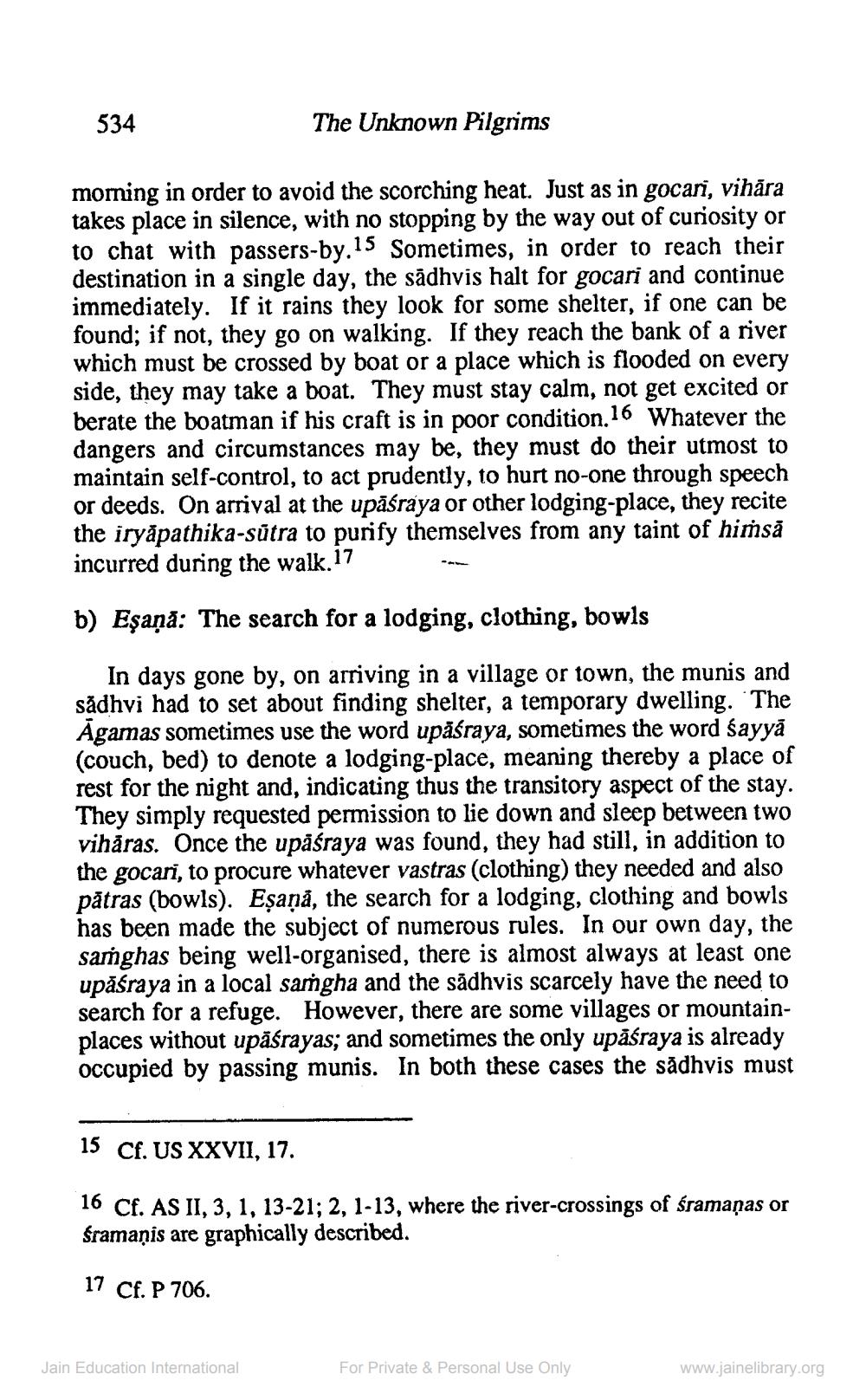________________
534
The Unknown Pilgrims
morning in order to avoid the scorching heat. Just as in gocari, vihāra takes place in silence, with no stopping by the way out of curiosity or to chat with passers-by.15 Sometimes, in order to reach their destination in a single day, the sādhvis halt for gocari and continue immediately. If it rains they look for some shelter, if one can be found; if not, they go on walking. If they reach the bank of a river which must be crossed by boat or a place which is flooded on every side, they may take a boat. They must stay calm, not get excited or berate the boatman if his craft is in poor condition. 16 Whatever the dangers and circumstances may be, they must do their utmost to maintain self-control, to act prudently, to hurt no-one through speech or deeds. On arrival at the upāśraya or other lodging-place, they recite the iryāpathika-sūtra to purify themselves from any taint of himsă incurred during the walk.17
b) Eşaņā: The search for a lodging, clothing, bowls
In days gone by, on arriving in a village or town, the munis and sådhvi had to set about finding shelter, a temporary dwelling. The Agamas sometimes use the word upăśraya, sometimes the word śayyā (couch, bed) to denote a lodging-place, meaning thereby a place of rest for the night and, indicating thus the transitory aspect of the stay. They simply requested permission to lie down and sleep between two vihāras. Once the upăśraya was found, they had still, in addition to the gocari, to procure whatever vastras (clothing) they needed and also pātras (bowls). Eșaņā, the search for a lodging, clothing and bowls has been made the subject of numerous rules. In our own day, the saṁghas being well-organised, there is almost always at least one upăśraya in a local samgha and the sadhvis scarcely have the need to search for a refuge. However, there are some villages or mountainplaces without upăśrayas, and sometimes the only upăśraya is already occupied by passing munis. In both these cases the sādhvis must
15 Cf. US XXVII, 17.
16 Cf. AS II, 3, 1, 13-21; 2, 1-13, where the river-crossings of śramaņas or śramaņis are graphically described.
17 Cf. P 706.
Jain Education International
For Private & Personal Use Only
www.jainelibrary.org




